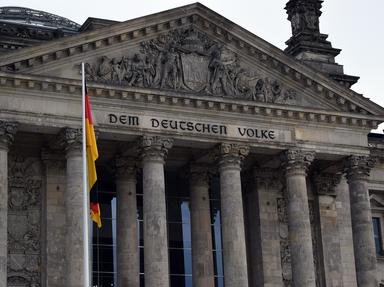Quiz Answer Key and Fun Facts
1. The year: IX. The event: Battle of the Teutoburg Forest. But what was the name of the victorious Germanic chieftain?
2. The year: CMLXII. The event: Otto I is crowned Emperor of a state composed of Germanic tribes and was, in fact, medieval Germany. What was the name of this state?
3. The year: MCXXII. The event: end of the Investitutre Controversy. What was the name of the treaty that brought an end to the Controversy?
4. The year: MDXVII. The event: Martin Luther writes his 95 Theses and posts them to the door of a church in a German city. Which one?
5. The year: MDCXLVIII. The event: end of the Thirty Years' War. What was the name of the concluding treaty?
6. The year: MDCCCLXVI. The event: the Austro-Prussian war results in a Prussian victory. Which of the following battles was fought during this war?
7. The year: MDCCCLXXI. The event: Chancellor Otto von Bismarck crowns Wilhelm II as Emperor of Germany. But, where did the coronation take place?
8. The year: MCMXXXIII. The event: Adolf Hitler is now the Chancellor of Germany. Which political party did he lead?
9. The year: MCMLXI. The event: The Berlin Wall is built. The Chancellor of West Germany at that time was Konrad Adenauer. But, was Erich Honecker the Head of State of East Germany in the same year?
10. The year: MCMXC. The event: West Germany and East Germany are unified. What was the name of the Chancellor of West Germany who oversaw their unison?
Source: Author
DeepHistory
This quiz was reviewed by FunTrivia editor
bloomsby before going online.
Any errors found in FunTrivia content are routinely corrected through our feedback system.

